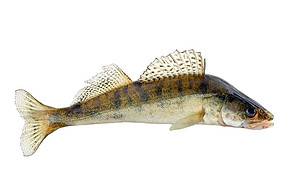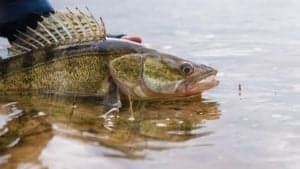The largest walleye ever caught in Indiana is not the state record. How can that be? It involves what some consider a legal technicality, but it was enough to keep this massive walleye out of the state record book.
The Official Record
A perusal of Indiana’s state fishing records shows two fish are tied for the record walleye in Indiana. These fish weighed a whopping 14 pounds and 4 ounces. Both were caught in the 1970s.
Leon Richart set a state record when he reeled in his monster walleye on the Kankakee River in Lake County in 1974. Three years later, that walleye record would be tied by Donald Tedford while fishing on the Tippecanoe River in Pulaski County in 1977.
These two fish are on record as the largest walleyes ever caught in the Hoosier State. The only issue with those records is a larger Indiana walleye was caught in 2002. But this is where the story becomes complicated.
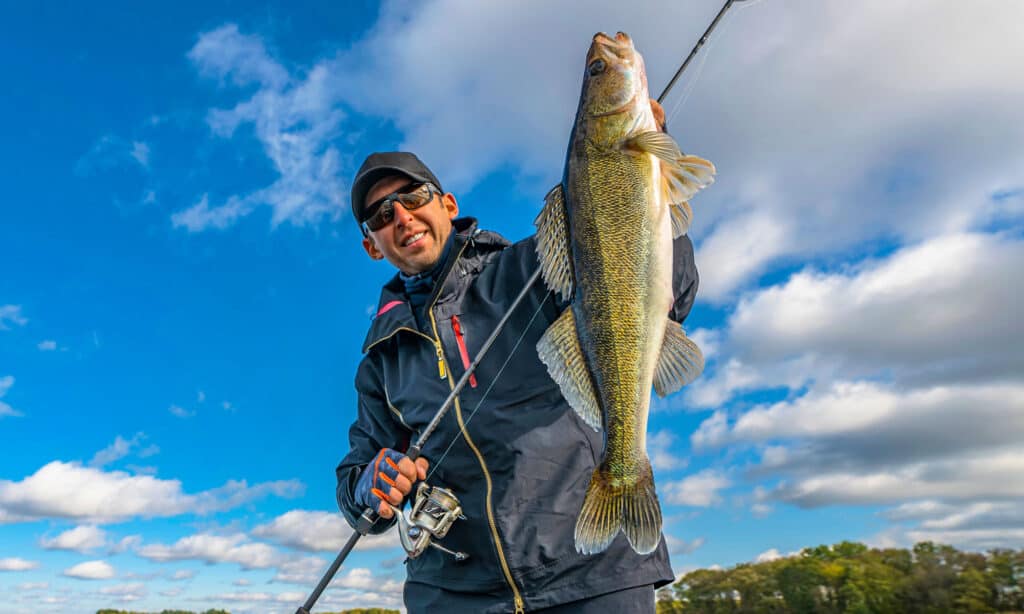
Multitudes of Indiana anglers pursue hard-fighting walleye each year.
©FedBul/Shutterstock.com
A Record That Isn’t a Record
Scott Hoswell was fishing on Lake Michigan on December 11, 2002, when he hooked into a monster walleye. Once he landed the fish after a 10-minute fight, Hoswell knew he had something special. The walleye measured 32 ¼ inches long and weighed 14.47 pounds, about a quarter of a pound heavier than the state record walleyes from 1974 and 1977.
As the Indiana Department of Natural Resources (DNR) was verifying the new record, officials learned where the fish had been caught. Hoswell hooked this walleye in Burns International Harbor, also known as the Port of Indiana. For safety and security reasons, fishing from boats is not allowed in the port.
Once DNR officials learned where the fish was caught, the record was invalidated. Bill James was Chief of Fisheries for Indiana at the time. In a release after the DNR refused to certify the new record, James said, “Indiana’s record fish entry rules require that a fish be legally taken to be eligible. We appreciate Mr. Hoswell’s honesty and his skill as an angler. But, unfortunately, we will not be able to accept an entry that did not comply with all relevant laws and regulations, including watercraft rules.” While his fish was not entered into the record books, Hoswell was not cited for illegally fishing in the port.

Fishing from boats is not allowed in the Port of Indiana, where Hoswell landed his massive walleye.
©97angel / CC BY-SA 4.0 – License
An Angler’s Disappointment
Hoswell lamented the DNR decision. He said, “For a fisherman, it’s important to have the state record. You look in the book, and my name could have been there for 30 years.”
The angler claimed he didn’t know about the ban on boat fishing when he caught the walleye. However, after his record was denied, he searched and admitted that he did find signs prohibiting boat fishing in the port.
This ban and the denial of Hoswell’s record walleye drew the ire of some anglers. They pointed out that while fishing from boats was illegal, shore fishing was widespread around the port. They saw this as an inconsistency in how the law was written and enforced.
But, regardless of public opinion for or against the ban, Hoswell’s walleye ended up being the Indiana record that never was.
Walleye
The walleye (Sander vitreus) is the largest member of the perch family in North America. An average walleye typically measures 15-20 inches long and weighs one to three pounds, though these fish do grow significantly larger when given the opportunity.
While it is subjective, most anglers in Indiana and elsewhere would consider a walleye over seven pounds as a very nice fish. A ten-pounder would be seen as a trophy walleye. A walleye over 14 pounds is an absolute monster. The world record walleye was caught in Tennessee in 1960 and weighed a staggering 25 pounds! That record has been disputed over the years, though.
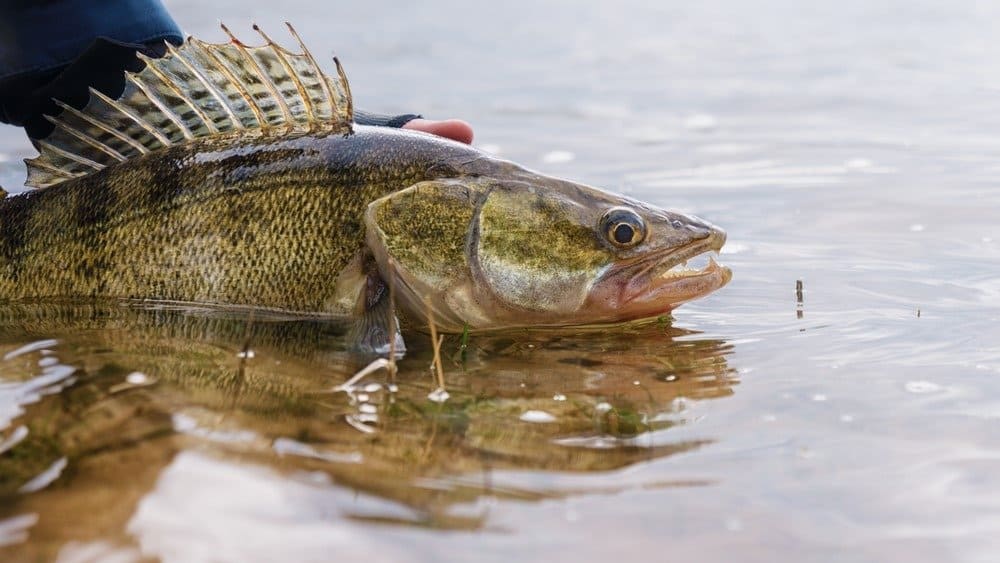
The walleye is the largest member of the perch family in North America.
©wwwarjag/Shutterstock.com
Distribution
The walleye’s original native habitat included the Great Lakes, the Saint Lawrence River, and the Mississippi River Basin. However, this fish has been distributed as far north as the Canadian Arctic and throughout much of the continental United States. The fish’s ability to adapt to habitats from frozen rivers to warmer lakes is remarkable, though the fish fares best in cooler water.
The fish was stocked far and wide due to its popularity both as a sportfish and as table fare. Walleye are among the most popular game fish in the United States.
Walleyes are toothy fish with long, lean bodies. They are olive green/gold with dark stripes along their backs. Their bellies are lighter in color, usually almost white.
The fish has famously large eyes and excellent vision in murky water and low-light conditions. The walleye is a crepuscular and nocturnal hunter.
Walleye prey mainly on other fish. Depending on the body of water, their diet may consist of yellow perch, shad, ciscoes, smelt, and many different types of minnows. Walleye are not picky eaters, though. They will also predate worms, insects, amphibians, crustaceans, and invertebrates. Their menu can include crayfish, snails, salamanders, frogs, and leeches.
The predator can also become prey. Walleye, especially when they are small, are prey targets for northern pike, largemouth bass, muskies, and birds of prey such as eagles and ospreys. Semi-aquatic mammals such as otters also dine on walleye.
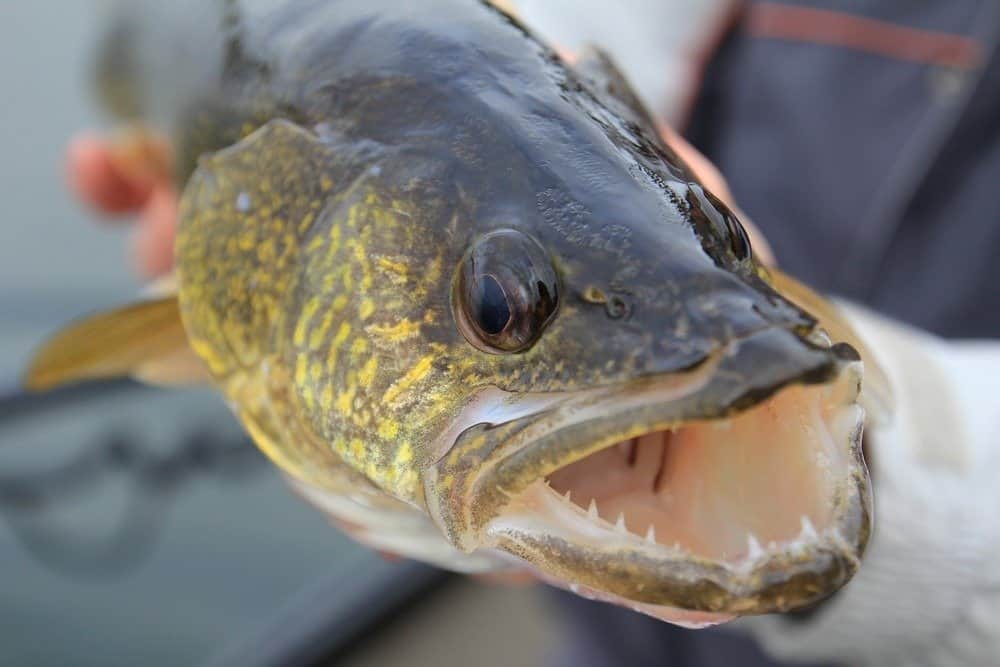
The walleye’s mouth is filled with sharp teeth.
©ElvK/Shutterstock.com
Walleye Fishing
Walleye are hard-fighting fish and are a favorite target for anglers.
When fishing for walleye, live bait is often a go-to choice. Check local laws and regulations, though. Some live baits are not legal in all areas where walleye are found.
Live minnows are among the most popular baits since they mirror the walleye’s preferred food. Nightcrawlers are also used often, especially in summer walleye fishing. Leeches can also be an effective walleye bait.
Artificial lures can be more challenging but also increase the odds of hooking a trophy walleye. A soft plastic jig may be the most popular lure to target walleye.
Hard-body crankbaits and jerk baits can be effective. Spoons and blade baits can also entice a walleye to strike.
Remember that walleye typically feed at or near the bottom, no matter which bait or lure you choose. So plan on rigging your bait or lure to fish deep water.
Some anglers prefer to use a wire leader because of the walleye’s sharp teeth. While the fish may bite through a standard fishing line, it likely won’t sever a steel leader. However, these leaders can impact the action of some lures, making them less effective. Walleyes can also see them more readily than monofilament fishing lines.
In colder climates, walleye are also targeted by ice-fishing anglers.
Since walleye actively feed most often in the evening and overnight, this is generally the best time to target them. Day fishing is possible, but it’s best to fish in overcast, low-light conditions. A bright sunny day may seem perfect to you, but it presents poor conditions for walleye fishing.

Walleyes are among the most popular game fish in North America.
©FedBul/Shutterstock.com
Tasty Fish
Walleye are among the most coveted freshwater fish in North America for table fare. They are regarded by some as the best-tasting freshwater fish in the world.
Walleye fillets have a firmer texture than some other fish. The taste is subtly sweet with almost no offputting “fishy” flavor. It is a bony fish, so watch out for the occasional small bone in the fillets.
The fillets are typically baked or pan-fried with lemon, pepper, and basil (along with other herbs). When cooked properly, the fillets are fork-tender and flaky.
The fish’s popularity as table fare was one of the driving forces for its wide distribution beyond its original native habitat.
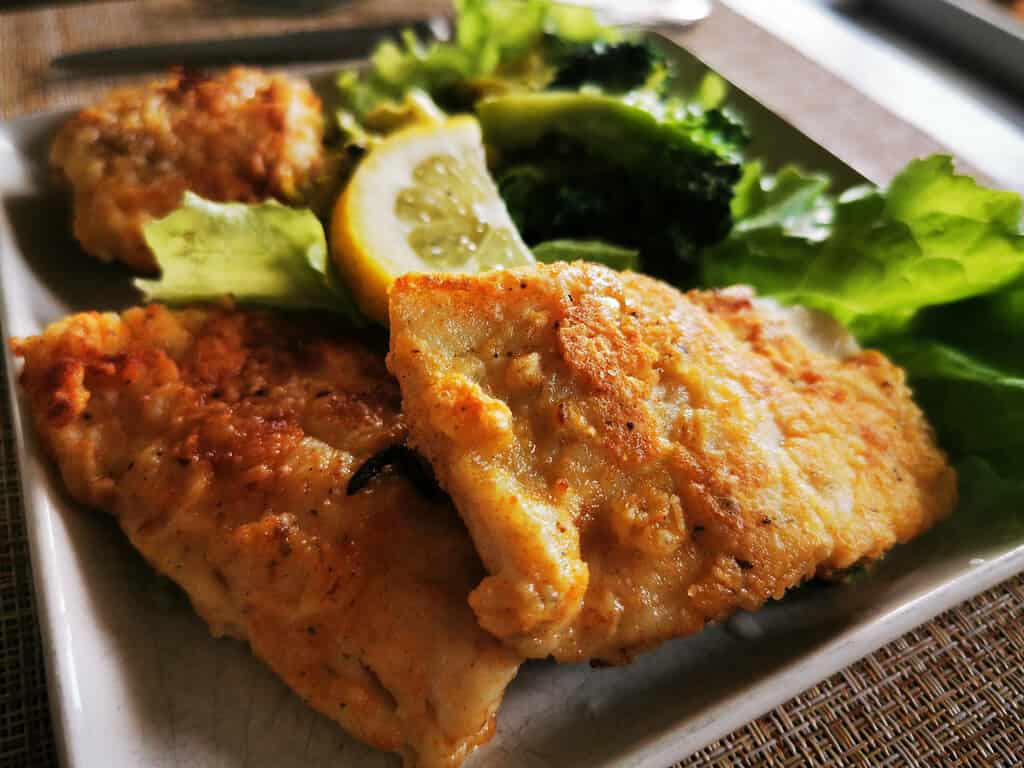
Walleye is considered by many to be the most delicious freshwater fish in the world.
©Stock-vector-photo-video/Shutterstock.com
Where Is Burns International Harbor Located on a Map?
Burns International Harbor is located at the bottom of Lake Michigan, within the coastline that is part of Indiana. It is not far from West Beach to the west and Boaters Beach and Indiana Dunes National Park to the east.
The photo featured at the top of this post is © iStock.com/FedBul
Thank you for reading! Have some feedback for us? Contact the AZ Animals editorial team.




